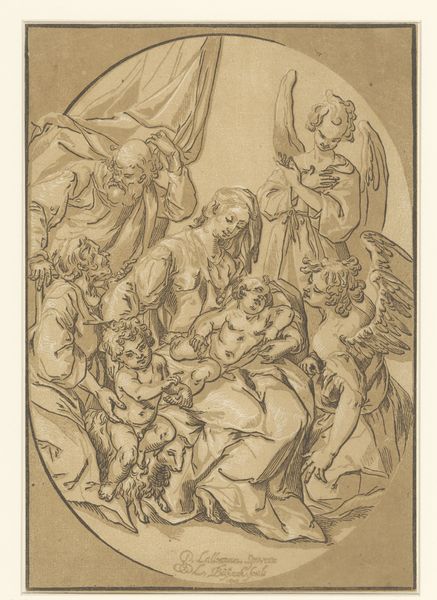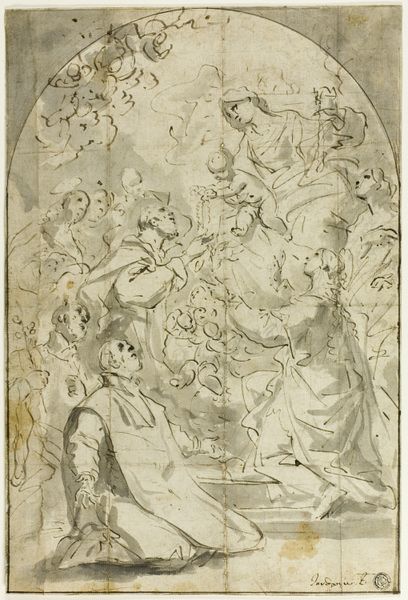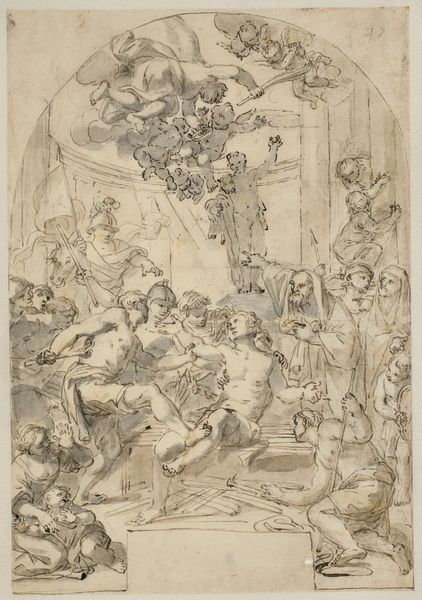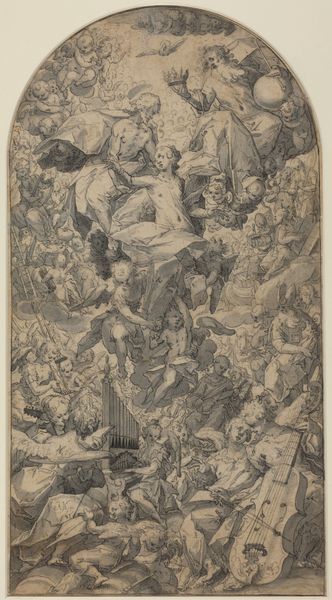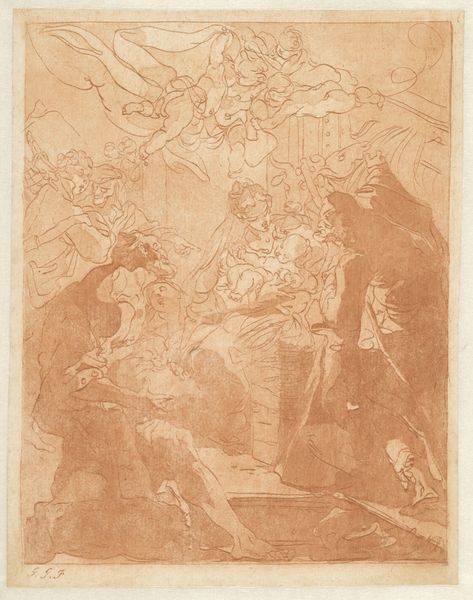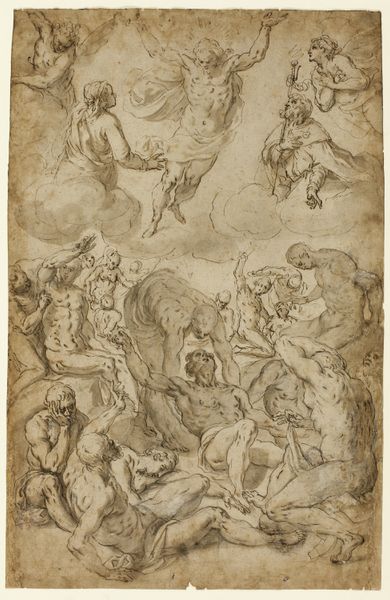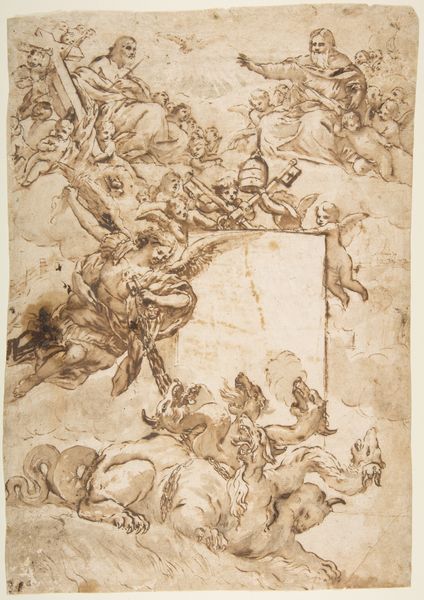
drawing, ink
#
drawing
#
allegory
#
baroque
#
charcoal drawing
#
figuration
#
ink
#
history-painting
Dimensions: sheet: 32 x 19.7 cm (12 5/8 x 7 3/4 in.)
Copyright: National Gallery of Art: CC0 1.0
Curator: Looking at this drawing by Melchior Steidl from 1711, titled "The Immaculate Conception," what strikes you first? It's rendered in ink and charcoal. Editor: It feels… buoyant. Like a baroque dreamscape on the verge of floating right off the page. There's such a lively chaos to the composition, with figures spilling into each other. A light-hearted allegory for the masses. Curator: Steidl offers us a layered visual argument here. Below, skeletal figures writhe, symbols of mortality overcome. Above them, a flurry of cherubic faces surrounds the Virgin, ascending in triumph. How does this interplay of dark and light strike you in a socio-political key? Editor: Well, during the Baroque, religious imagery was frequently employed to affirm the Catholic Church's authority and doctrine in the face of Protestant Reformation, but the buoyant mood is less imposing. And its rendering as a charcoal drawing shifts its role in the political landscape: It could be a preliminary sketch, for instance, a smaller copy made for private devotion, or a didactic print sold to larger audiences. I would be curious about its audience! Curator: Absolutely. And consider that central Hebrew inscription – the tetragrammaton representing the name of God – shining above the scene. Editor: Ah, a detail easy to miss at first glance! Its placement draws a direct link between divine power and Mary's purity. Interesting in contrast with the skeleton below. Curator: It is that interplay of the earthly and the divine that's really got me thinking about the accessibility of religious experience at that time. Editor: Steidl is reminding us, perhaps, that even the most exalted concepts are rooted in our shared humanity, both temporal and mortal. What begins as a sketch, a vision of ascending faith, can find so many expressions and uses beyond this museum. Curator: Well said. Thanks for teasing out the political, social, and emotional nuances with me today! Editor: Thank you; I felt as if my perceptions rose closer to heaven too.
Comments
No comments
Be the first to comment and join the conversation on the ultimate creative platform.
